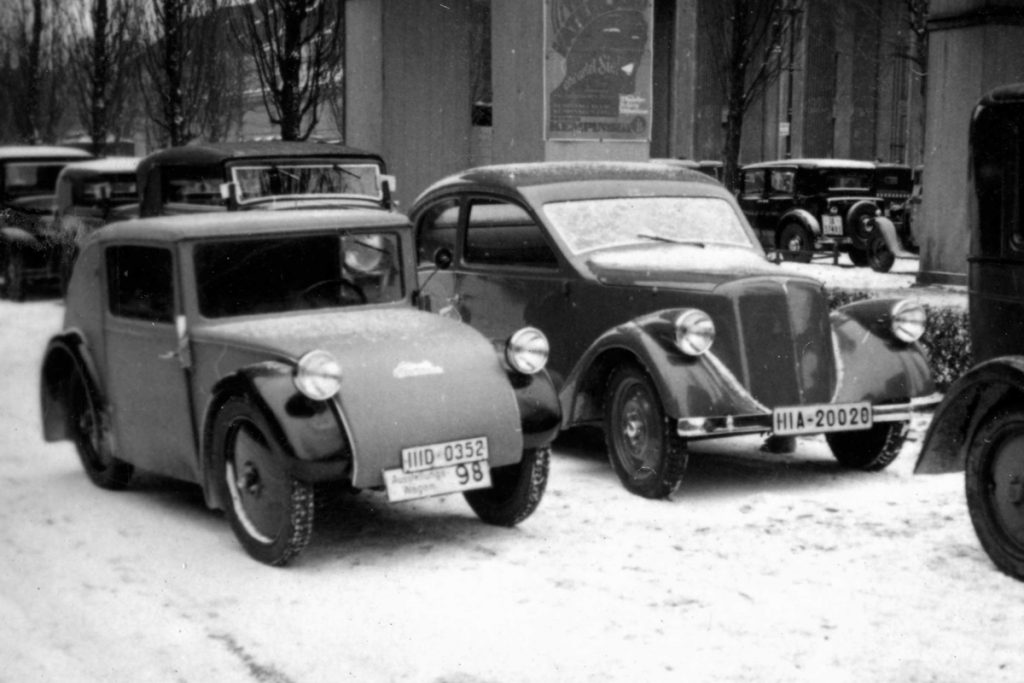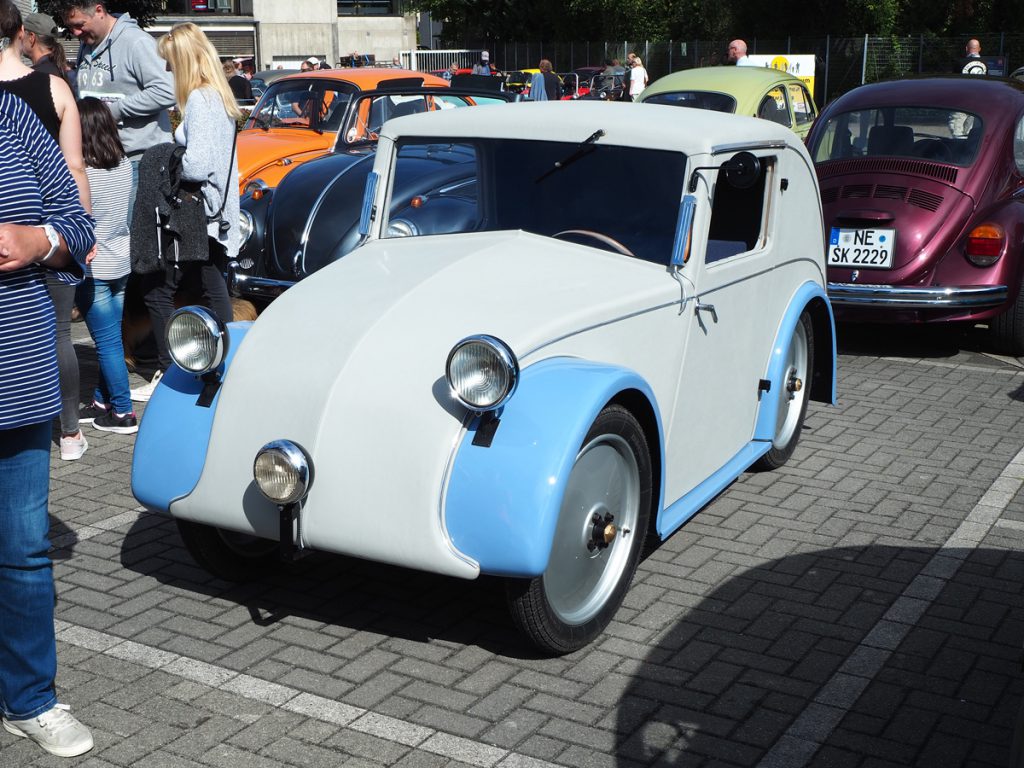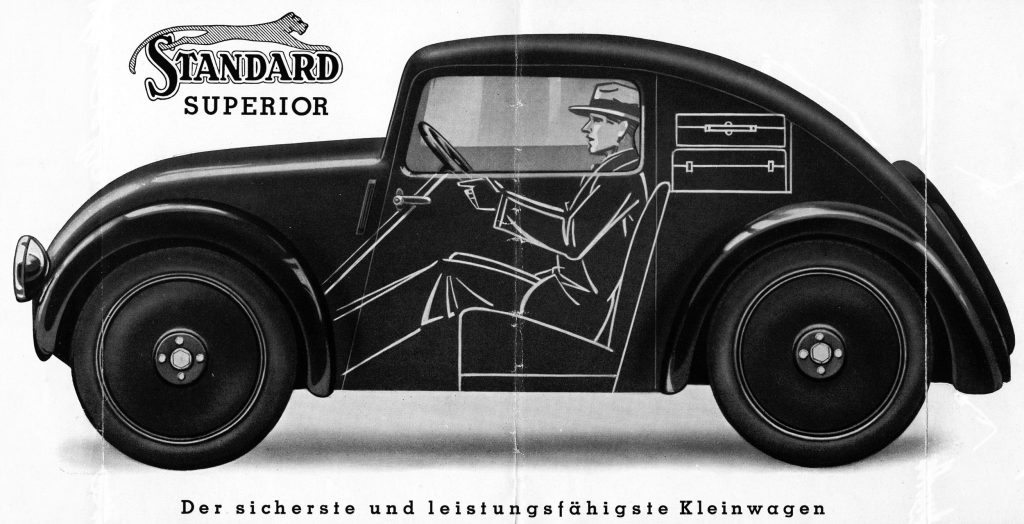Thanks for your support!
We would like to thank the many supporters of our Indiegogo crowdfunding project to restore the 1933 Standard Superior Type 1! We were able to collect €14,247 or 32% of our goal during the timeframe given by the Indiegogo platform. Together with some additional donations and funding we were able to realize our ambitious project. The 1933 Standard Superior is now almost fully completed, with just some details left to finish.
Start of the restoration
In the fall of 2017 we were introduced to the Firma Mebero s.r.l., Dr. A. Bilciurescu in Cluj, Rumania – a highly professional restoration company that works for many international clients including car museums. The company made us a very good offer to fully restore our 1933 Standard Superior at a very attractive rate. We took them up on their offer and have officially started restoration in September 2017. Next to support from Firma Mebero s.r.l. in Cluj, Rumania, Dutch company Jacobs NCI is supporting us by rechroming original parts and details of the car free of charge.
Recreating a milestone in automotive history
In 1933, at the Berlin motor show, Jewish engineer Josef Ganz presented a revolutionary “Volkswagen” before Hitler. Fast forward five years: Hitler introduces the KdF Volkswagen to the German people while Ganz is erased from history. Our aim is to rebuild Ganz’s original 1933 “Volkswagen” – the Standard Superior type I – and give him back his well-earned position in automotive history. We have secured the only surviving car, but we need your help to recreate its original beetle shape:
- Dutch journalist & writer Paul Schilperoord met Lorenz Schmid, a Swiss-born relative of Josef Ganz, when he was researching for the biography of Josef Ganz – and together we bought the Standard Superior.
- Our car has the only complete surviving rolling chassis of the Standard Superior type I – an estimated 250 cars were built from April to September 1933. (This model was followed by the type II with different body styling)
- The aim of our campaign is to raise funds to recreate the original beetle-shaped bodywork for this chassis – working with professional restorers.
Our goals and ambitions
If we are successful, the restored Standard Superior will be used in future international exhibitions & events to promote the work of Josef Ganz (1898-1967).
Our plan to recreate the original beetle shape
Our car miraculously survived as it was kept on the road in East Germany for decades. Its chassis and running gear is fully original – including the wheels and wings – but the bodywork has been largely modified using Trabant P50 parts:
- Step 1: take the existing bodywork off the chassis and clean up or renovate original parts, such as chassis, wheels and wings.
- Step 2: the wooden bodywork will be reconstructed by a wood craftsman – using many original photographs from the Josef Ganz archives – and their associated partners will install artificial leather covering the wooden bodywork, do the paintwork and install windows and interior trim.
- Step 3: locate and install missing parts, such as original lights, steering wheel, dashboard switches, door handles, radiator, etc.
The Standard Superior in Volkswagen history
The Standard Superior is the embodiment of Josef Ganz’s propaganda campaign “For the German Volkswagen”. As editor-in-chief of Motor-Kritik magazine, he outlined the specs for this future car: low-slung, streamlined, backbone chassis, rear-mounted engine, fully independent suspension with swing axles – and a price not exceeding 1,000 Reichsmark.
Ganz initially built two prototypes: the 1930 Ardie-Ganz and 1931 Adler Maikäfer (May Bug). As a technology demonstrator, the May Bug (see video above – with Josef Ganz behind the wheel!) inspired the industry to develop radical new prototypes – including the Mercedes-Benz 120, Tatra V570, Zündapp Type 12 “Volksauto” by Ferdinand Porsche, and Standard Superior based on the patents of Josef Ganz.

Exhibition model Standard Superior (left) next to the Zündapp Type 12 “Volksauto” prototype by Ferdinand Porsche (right) outside of the 1933 IAMA in Berlin.
At the time of its introduction at the 1933 Berlin motor show, the Standard Superior was the only 4-wheeled, rear-engined car in production. At the show, the Superior caught the eye of Hitler – and was hailed by the press:
- “On 4 wheels runs the highlight of the exhibition […] rear engine = the future” – Die Neue Stadt
- “the most advanced despite its small proportions” – Motor und Sport
- “The Standard Superior, as devised by Ganz, has proven extraordinarily successful […] and it will in all probability lead to the introduction of larger models with rear-mounted engines.” – ADAC-Motorwelt
A journalist for The Detroit News concluded: “Whatever may be the future development of this type of car in Germany, without doubt the Hitler government will be responsible for its popularization.” Although Hitler would indeed popularize the “Volkswagen”, even the most prophetic journalist could not have foreseen that in the process he would deliberately erase the visionary Jewish engineer Josef Ganz from history.
Risks & challenges
Our main challenges are that no technical drawings are known to exist for the Standard Superior Type I – and that we need to find a number of original parts for the car that was only produced in very limited numbers in 1933:
- We plan to work with specialists to recreate the original shape of the bodywork based on period photographs and a surviving original Standard Superior Type II. This car has different body styling but a similar overall construction.
- A number of the original parts we need to find are electrical parts. Standard exclusively used parts by Bosch, which already was a well-established company at the time.
- We plan to make regular trips to specialized events for pre-WWII cars, such as the VETERAMA, to search for missing parts.






